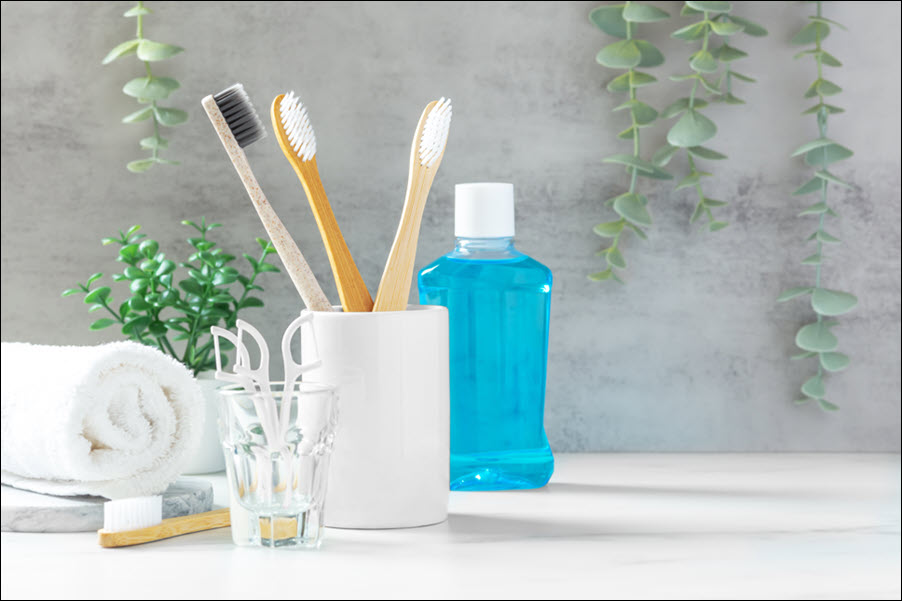Proper brushing, flossing, and rinsing strengthen teeth and protect gums from plaque and bacteria. Brushing removes plaque from tooth surfaces, while flossing cleans between teeth and under the gumline. Rinsing with mouthwash reduces bacteria and freshens breath. Poor oral hygiene increases the risk of cavities, gum disease, and tooth sensitivity. Consistent care strengthens enamel, reduces plaque, and improves breath freshness. Understanding how to brush, floss, and rinse properly improves long-term dental health. Let’s explore the best techniques for a cleaner, healthier smile.
How to Brush Properly
Brushing properly removes plaque and strengthens enamel. Use a soft-bristled toothbrush and fluoride toothpaste. Position the toothbrush at a 45-degree angle to the gumline. Brush using small, circular motions to clean the front, back, and chewing surfaces of teeth. Avoid scrubbing too hard to prevent gum damage and enamel erosion. Brush for at least two minutes, twice a day. Clean the tongue and roof of the mouth to remove bacteria and improve breath freshness. Replace your toothbrush every three months or when bristles become frayed. Electric toothbrushes improve plaque removal and gum stimulation. Consistent brushing reduces plaque, strengthens enamel, and improves overall dental comfort. Stronger teeth and cleaner gums increase smile confidence.
How to Floss Properly
 Flossing removes plaque and food particles from between teeth and under the gumline. Use about 18 inches of floss, wrapping it around your middle fingers. Slide the floss between teeth using a gentle back-and-forth motion. Curve the floss into a “C” shape around each tooth and clean under the gumline. Avoid snapping the floss to prevent gum irritation. Use a clean section of floss for each tooth to prevent bacteria transfer. Flossing once a day reduces plaque buildup and gum inflammation. Water flossers and floss picks offer alternative options for better access. Consistent flossing improves gum health and reduces cavity risk. Clean spaces between teeth improve overall mouth comfort and breath quality.
Flossing removes plaque and food particles from between teeth and under the gumline. Use about 18 inches of floss, wrapping it around your middle fingers. Slide the floss between teeth using a gentle back-and-forth motion. Curve the floss into a “C” shape around each tooth and clean under the gumline. Avoid snapping the floss to prevent gum irritation. Use a clean section of floss for each tooth to prevent bacteria transfer. Flossing once a day reduces plaque buildup and gum inflammation. Water flossers and floss picks offer alternative options for better access. Consistent flossing improves gum health and reduces cavity risk. Clean spaces between teeth improve overall mouth comfort and breath quality.
How to Use Mouthwash Effectively
Mouthwash reduces bacteria and freshens breath. Use an antibacterial or fluoride mouthwash to strengthen enamel and reduce plaque. Pour about 20 milliliters of mouthwash into a cup. Swish it around your mouth for 30 to 60 seconds. Gargle to clean the back of the throat and kill odor-causing bacteria. Spit out the mouthwash and avoid rinsing with water afterward to allow fluoride to coat teeth. Alcohol-free mouthwash reduces dryness and prevents gum irritation. Antiseptic mouthwash treats gum inflammation and reduces plaque buildup. Using mouthwash twice a day improves breath freshness and reduces plaque. Combined with brushing and flossing, mouthwash strengthens teeth and gums. Fresher breath increases overall comfort and confidence.
Common Brushing and Flossing Mistakes
Brushing too hard wears down enamel and damages gums. Using a hard-bristled toothbrush increases sensitivity and gum recession. Skipping flossing allows plaque and food particles to build up between teeth. Not brushing long enough leaves plaque and bacteria behind. Using mouthwash instead of brushing does not remove plaque from tooth surfaces. Failing to clean the tongue increases bacteria growth and bad breath. Rinsing immediately after brushing washes away fluoride protection. Inconsistent brushing and flossing increase plaque buildup and gum sensitivity. Correcting these mistakes improves oral health and reduces dental complications. Proper technique strengthens teeth and improves overall gum health.
How to Create an Effective Oral Care Routine
Consistency improves oral health and strengthens teeth. Brush and floss at the same time each day to build a habit. Use a fluoride toothpaste to protect enamel and reduce cavities. Floss before brushing to remove plaque and allow fluoride to reach between teeth. Mouthwash enhances plaque removal and freshens breath. Set a timer to ensure you brush for a full two minutes. Keep oral care tools visible to remind yourself of your routine. Regular dental checkups reinforce good habits and improve technique. Better oral care increases tooth strength and gum health. A consistent routine improves long-term dental health and confidence. And be sure to schedule routine professional dental exams and checkup every six months.
Benefits of Proper Brushing, Flossing, and Rinsing
Proper oral care reduces plaque buildup and strengthens enamel. Brushing and flossing reduce cavity risk and improve gum health. Mouthwash kills bacteria and improves breath freshness. Clean teeth reduce the risk of gum disease and tooth loss. Stronger enamel increases resistance to acid erosion and sensitivity. Proper oral care improves bite strength and chewing comfort. Reduced plaque buildup increases tooth shine and overall smile appearance. Fresher breath improves social comfort and confidence. Consistent care reduces the need for complex dental treatments. Investing in proper oral care improves overall dental health and appearance.
When to See a Dentist for Professional Care
Regular dental checkups detect and treat plaque buildup and gum inflammation. Dentists recommend professional cleanings every six months. Professional cleanings remove tartar and plaque from hard-to-reach areas. Dentists treat early signs of cavities and gum disease before they worsen. X-rays reveal hidden decay and bone loss. Dentists provide fluoride treatments to strengthen enamel and reduce sensitivity. Dental cleanings improve breath freshness and overall oral comfort. Professional guidance improves brushing and flossing technique. Better dental care reduces long-term dental costs and improves tooth health. Consistent checkups and proper care strengthen teeth and gums.
Brushing, flossing, and rinsing properly protect teeth and gums from plaque and bacteria. Brushing twice a day strengthens enamel and removes plaque. Flossing daily cleans between teeth and reduces gum inflammation. Mouthwash improves breath freshness and strengthens enamel. Proper technique prevents cavities, gum disease, and bad breath. Consistent oral care increases tooth strength and improves gum health. Regular dental checkups detect and treat early dental problems. Investing in proper home care reduces long-term dental costs and complications. Stronger teeth and healthier gums create a confident and balanced smile.

